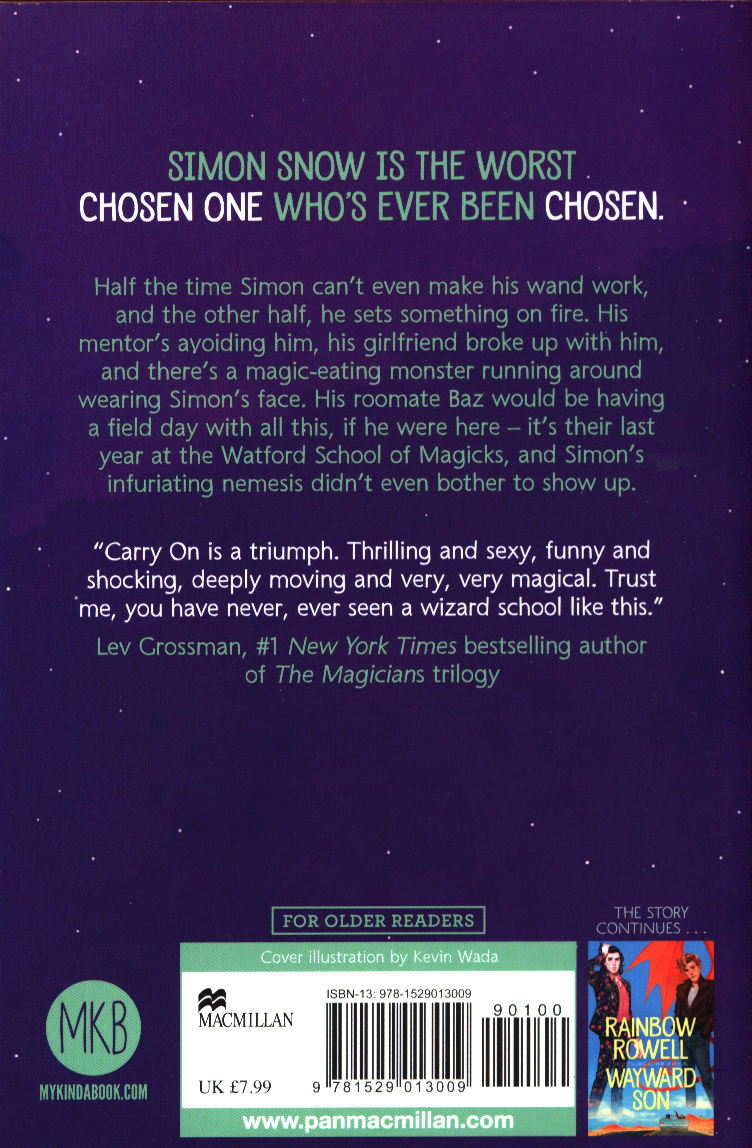

Baz.Īfter so long, so long, of reading about Baz, hearing of him from Simon’s point of view through a series of flashbacks and Simon’s thoughts, we finally get to meet him in person and I was not disappointed at all. Across the room, a mug falls to the floor and shatters – I glance over and see that Agatha is standing, too. I stand up too quickly, knocking my chair over. When the figure steps forward, I recognize him at once. Ultimately, the best parts of the book begin with the end of the first section: However, the surprise twist revealed at the end of the novel is baffling. It seemed too much like trying to get him out of the picture, I suppose. Whilst this could have been looked upon as the behaviour of one determined to protect him, I couldn’t help but feel slightly suspicious about the Mage’s determination to have Simon moved away from the school. From the moment he returns, the Mage is persistent that Simon be elsewhere.

The Insidious Humdrum, our big bad, there isn’t much to say without really spoiling the book, but lets just take a moment now to congratulate Rowell on this character and the ‘connection’ it had to Simon within the novel. Here, the school is run by the Mage and he has a close relationship to Simon as he does to most of his students.Īs for our big bad in the story, he attacks Simon when he’s returning to Watford. This is where the similarities to the Harry Potter novels really come into play with the reader discovering that this Hogwarts-like school, which is also located in Britain, houses and teaches many young Wizards and Witches the essentials of magic. The first section of the book mostly follows Simon Snow’s character as he returns to the magical school of Watford School of Magicks. The familiarity of such phrases used as well makes the use of magic throughout the story enjoyable to read and even humorous at times, what with one of the spells the Mage casts being the lyrics from Queen’s Bohemian Rhapsody. The use of such every day words, phrases, and lyrics as spells really reflects on how powerful words truly are-something which many including myself overlook on a daily basis. Not just saying the words but summoning their meaning”. The key to casting a spell is tapping into that power. “And they become more powerful,” she went on, “the more that they are said and read and written, in specific, consistent combinations. But I was trying to commit it all to memory. No one else was paying attention she wasn’t saying anything they didn’t already know. “Words are very powerful,” Miss Possibelf said during our first Magic Words lesson. The magic within Rowell’s novel is cleverly taken not from Latin or some made up language as most magical works of fiction use, but in fact from every day terms, which is explained within the book. That being said, Carry On is its own story.

Right from the get-go, the magical nature of the story is established and whilst there are many similarities to the Harry Potter series by J.K Rowling-such as Simon being similar to Harry Potter, the Mage to Dumbledore, Penny to Hermione and Baz being almost similar to Draco Malfoy. The story is presented to the reader through the first-person narrative of a selection of characters, particularly from the perspective of the two main characters Simon Snow and Baz Pitch. However, that being said, readers are perfectly able to read this book on its own as this YA novel is, in its own right, its own story! The book itself is split into four sections or ‘books’ with each one as epic as the other making the entire novel a definition page turner… Published in 2015, this 517-paged tale is a take on the fictional characters within Cath’s world featured in Fangirl.

If you’re a fan of Rainbow Rowell’s books, particularly her novel titled Fangirl, then you’ll love Carry On.


 0 kommentar(er)
0 kommentar(er)
